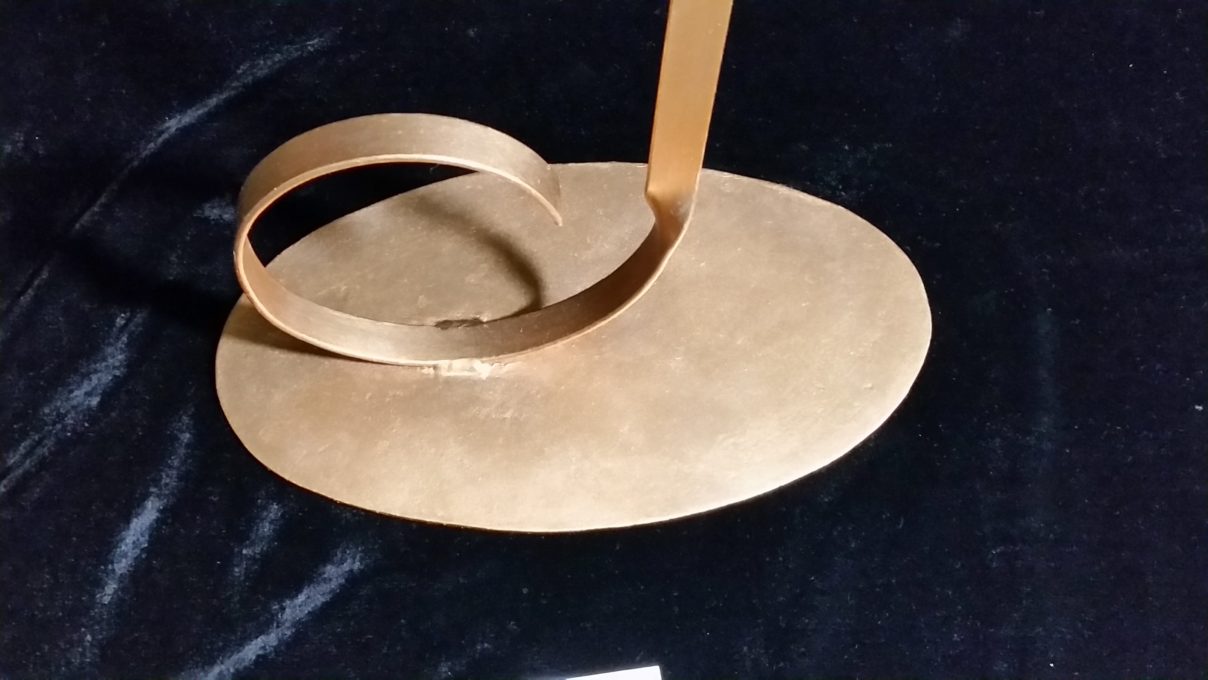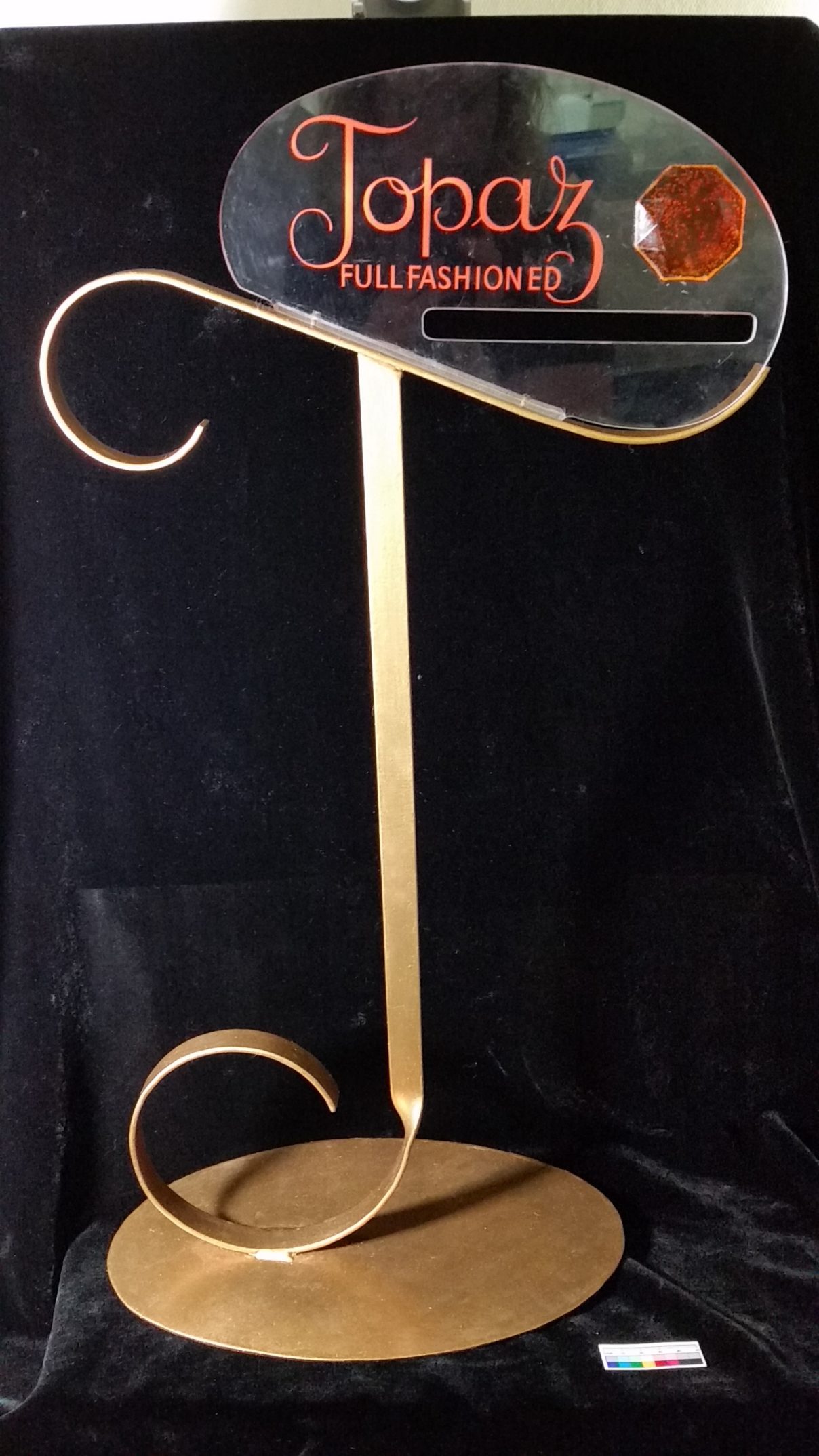May ’21
Topaz Display Stand

A metal and Perspex display stand for advertising / displaying women’s hosiery, which is part of Beamish Museum’s object collection. Topaz was a brand of hosiery from the 1960’s and it is likely that the display stand dates to that time.
The history of pantyhose, as for stockings, is tied to the changes in styles of women’s hemlines. Before the 1920s, it was generally expected that women would cover their legs in public, including their ankles; and dress and skirt hemlines were generally to the ground. In the 1920s, fashionable hemlines for women began to rise, exposing the legs to just below the knees. Stockings also came into fashion to maintain leg coverage, as well as some level of warmth. The most popular stockings were sheer hosiery which were first made of silk or rayon; after 1940 they were made of nylon.

In 1953, Allen Gant developed a commercial equivalent to these hose that he named “Panti-Legs”, but these were not brought to the open market until about 1959. During this time, Ernest G. Rice invented his own design for pantyhose similar to those worn today, and in 1956 he submitted a patent titled “Combination Stockings and Panty”.
While the new pantyhose were convenient, it wasn’t until the rise of miniskirts in the 1960s that tights started to really become popular. Once popular models of the time put on their minis and added tights, young shoppers rushed to department stores to get their own pairs. Part of the reason for that was because of the miniskirt’s short hems, as it wouldn’t look proper for a garter belt to peek out from under a short miniskirt.
Condition
- Evidence of dirt on the surface
- Loss of original material on the perspex portion of the stand
- Signs of flaking paint on the metal components
- Evidence of iron corrosion on the metal components.
Conservation

The Topaz display stand was disassembled by removing the screws attaching the Perspex sheet to the metal base in order to treat the pieces separately.
As the metal beneath the paint was severely corroding and paint was actively being lost, the decision was made to remove the original paint from the stand in order to treat the metal. Samples of the original paint were however saved. The corrosion on the metal stand was removed mechanically, and then a rust converter was applied in order to help stabilise the surface.

The metal stand was then degreased using acetone, and a grey surface primer was applied in order to help prevent oxygen and moisture from reaching the surface of the metal. The metal stand was then painted with an appropriate gold paint in order to mimic the original gold painted surface. Finally, a solution of Aquazol 500 was applied to the painted surface to help prevent oxygen and moisture from reaching the surface of the metal.
The screws were treated mechanically to remove the corrosion from the surface, and then were coated with a Paraloid B72 solution in order to help prevent future corrosion.
The Perspex sign was cleaned using a deionised water and ethanol solution, applied with cotton swabs, in order to remove the dirt. It was evident that a coloured gem of some sort was originally attached to the surface of the Perspex sign as part of the gem remained along with a faint outline. As such, a new gem was moulded from a glass door knob of the same shape, using clear casting resin and amber colouring. This was then attached to the Perspex sign using Paraloid B72 adhesive. The Perspex sign was then reattached to the metal stand using the original screws.
Stay tuned for next month’s object!
